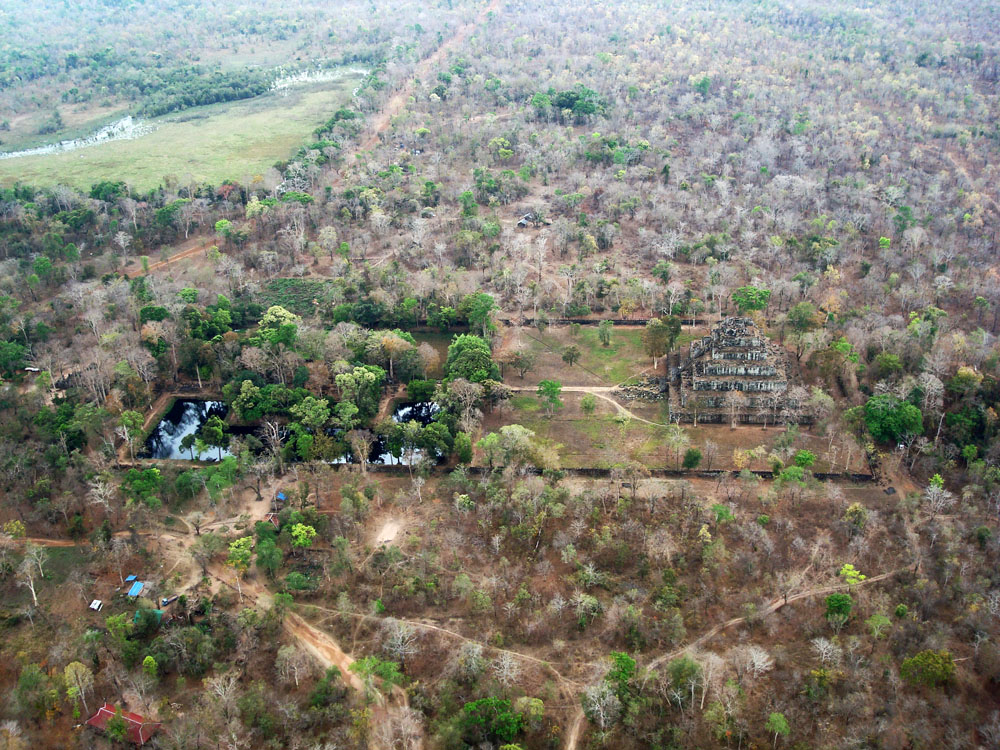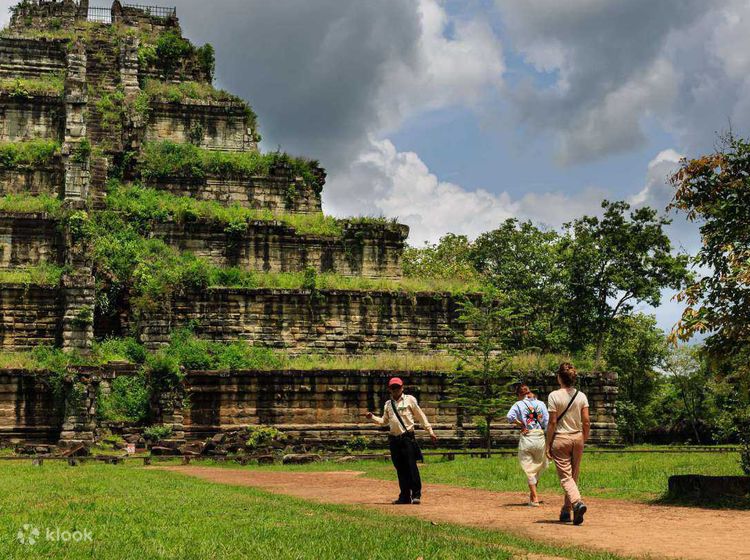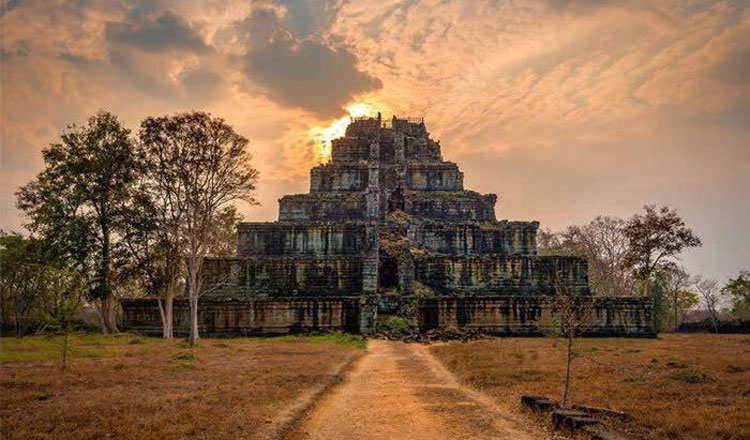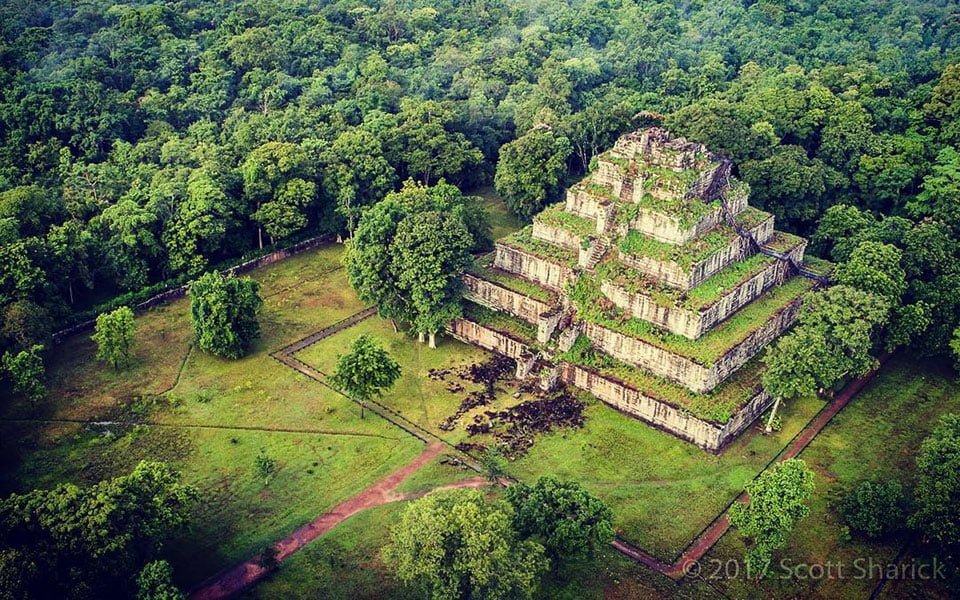Koh Ker Temple is a remarkable archaeological site in northern Cambodia that was once the capital of the Khmer Empire from 928 to 944 CE. The site contains more than 180 sanctuaries, monuments, and sculptures that showcase the artistic and architectural achievements of the ancient Khmer civilization. On 17 September 2023, Koh Ker Temple was officially inscribed on the UNESCO World Heritage List, becoming the fourth World Heritage Site in Cambodia after Angkor, Preah Vihear, and Sambor Prei Kuk.
The History of Koh Ker Temple
Koh Ker Temple was built under the reign of King Jayavarman IV, who moved the capital of the Khmer Empire from Angkor to Koh Ker in 928 CE. He was a powerful and ambitious ruler who wanted to establish his own religious and political center away from the influence of his predecessors. He also wanted to honor his patron deity, Shiva, the Hindu god of destruction and regeneration.
Under Jayavarman IV’s rule, Koh Ker Temple became a thriving city and a religious sanctuary. He constructed an enormous water reservoir and about 40 temples in various styles and sizes. The most impressive structure is Prasat Thom, a 36-meter-high seven-tiered pyramid that served as his state temple and mausoleum. The pyramid is decorated with stone carvings of gods, animals, and mythical creatures. On top of the pyramid stands a giant lingam, a phallic symbol of Shiva’s power and fertility.
Jayavarman IV also commissioned many sculptures and statues that reflect his artistic vision and personal devotion. Some of the sculptures are colossal in size, such as the Garuda (a mythical bird-man) and the Nandi (a sacred bull). Some of the statues are exquisite in detail, such as the Dvarapalas (temple guardians) and the Apsaras (celestial dancers). Some of the sculptures are unique in style, such as the Kala (a monster face) and the Makara (a sea creature).
Koh Ker Temple remained the capital of the Khmer Empire until 944 CE, when Jayavarman IV’s son and successor, Harshavarman II, moved it back to Angkor. After that, Koh Ker Temple gradually declined and was abandoned by the 15th century. The site was forgotten and overgrown by the jungle until it was rediscovered by French explorers in the 19th century. However, due to its remote location and security issues, Koh Ker Temple remained largely inaccessible and unexplored until recently.
The Significance of Koh Ker Temple
Koh Ker Temple is not only a historical site, but also a cultural and natural heritage of Cambodia. The site represents a unique and significant period in the history of the Khmer Empire, when a king dared to challenge the established order and create his own legacy. The site also showcases the artistic and architectural diversity and creativity of the Khmer civilization, which influenced many other cultures in Southeast Asia. The site also preserves a rich biodiversity of flora and fauna, which contributes to the ecological balance and sustainability of the region.
Koh Ker Temple is also a source of pride and identity for Cambodians, especially for the local communities who live near the site. The site provides them with economic opportunities through tourism and handicrafts. The site also provides them with educational opportunities through cultural exchange and learning. The site also provides them with spiritual opportunities through worship and meditation.
Koh Ker Temple is now recognized by UNESCO as a World Heritage Site, which means that it has outstanding universal value to humanity and deserves protection and preservation for future generations. As a World Heritage Site, Koh Ker Temple will benefit from international cooperation and assistance in terms of conservation, management, research, and promotion. As a World Heritage Site, Koh Ker Temple will also contribute to global peace and understanding through dialogue and cooperation among different cultures and nations.
List of references:
- 1: Koh Ker: Archeological site of Ancient Lingapura Or Chok Gargyar
- 2: Koh Ker – Wikipedia
- 3: Koh Ker: A Hidden Wonder
- 4: Koh Ker: The Sculptures
- 5: Koh Ker: A Forgotten Capital
- 6: Koh Ker: A Cultural And Natural Heritage
- 7: Koh Ker: A Living Heritage
- 8: What is World Heritage?








